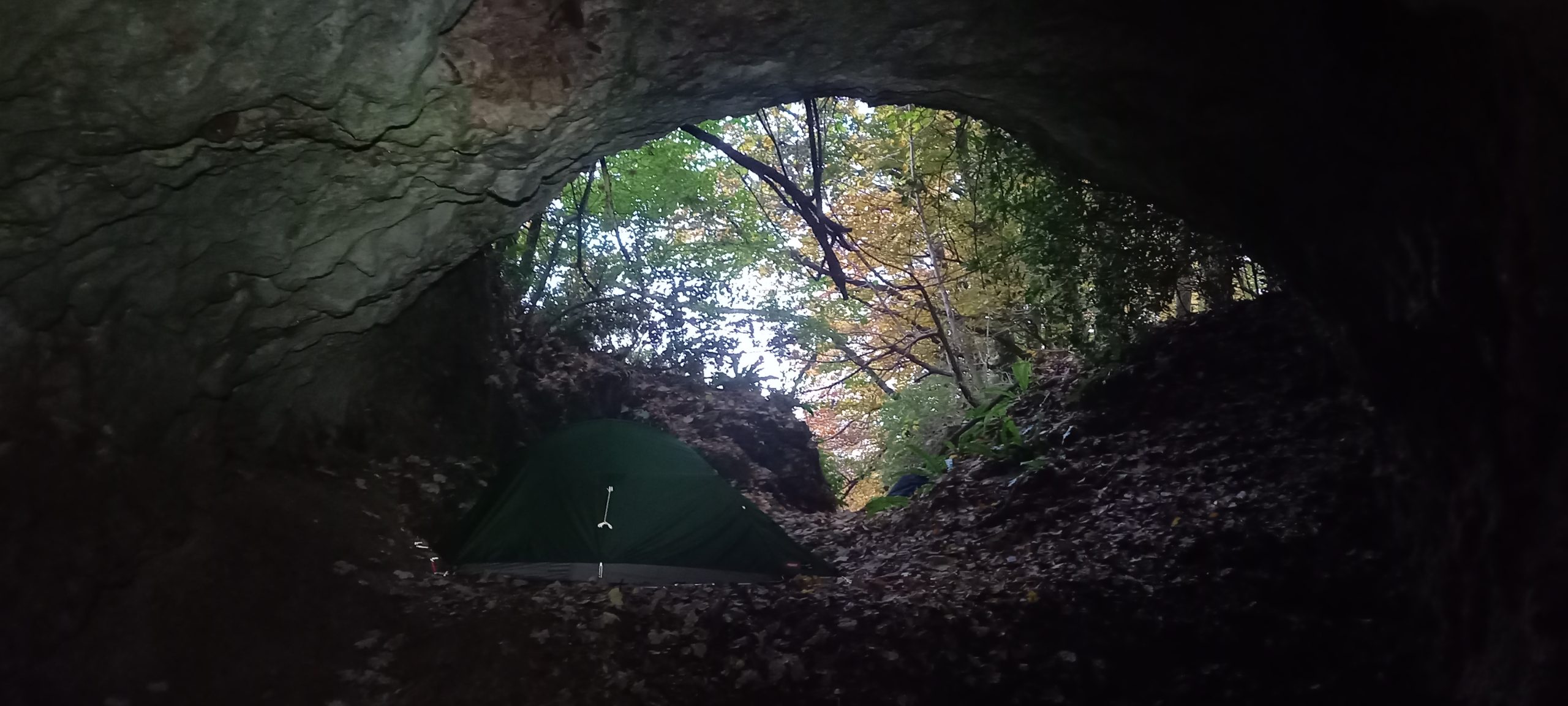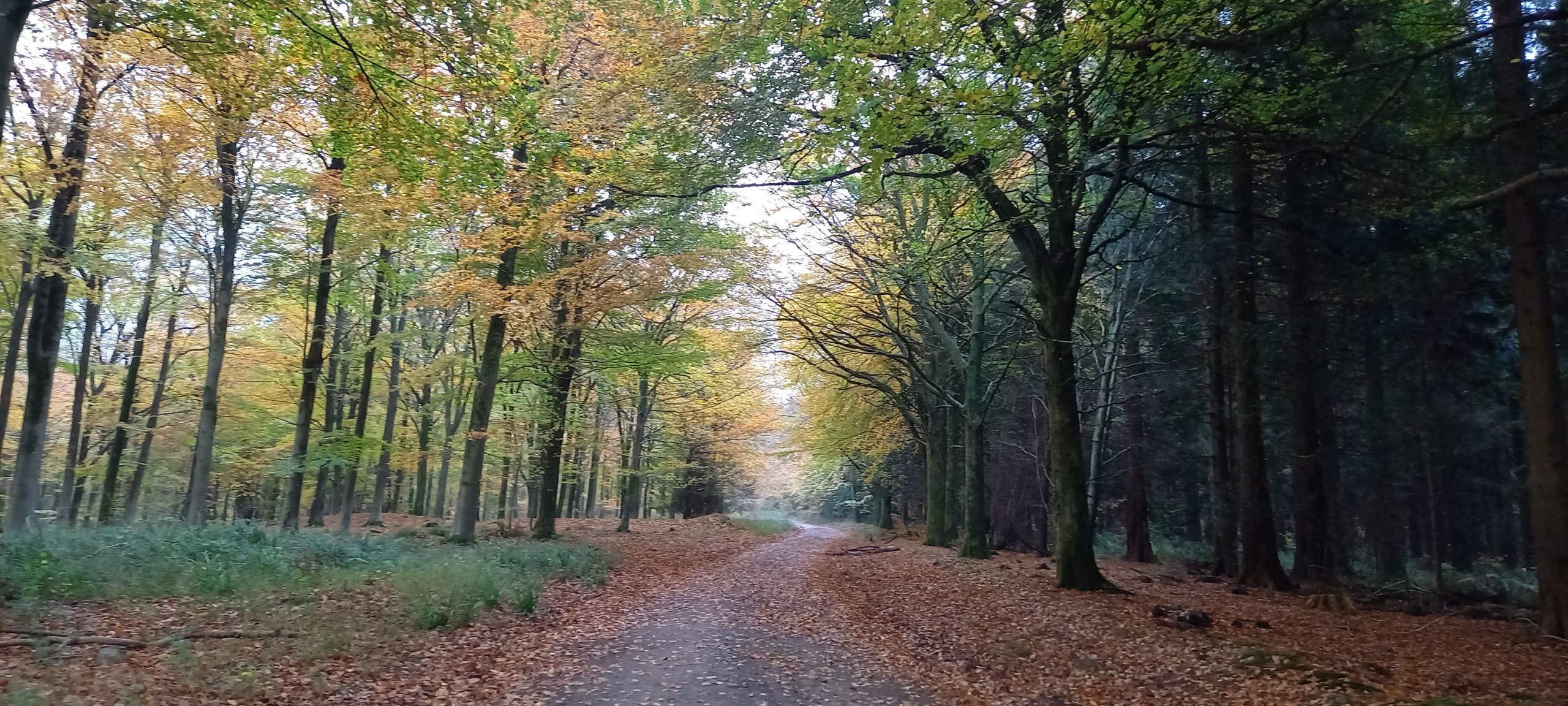NGR ST 45954, 58022. Scheduled monument, listed entry no. 1011926

13th November: A local walk to try out some new kit recently purchased including a 1-person tent (Alpkit Soloist) and backpack (Deuter Speed Lite 25Litre) and a borrowed pair of OEX X-lite Pro carbon poles. Got my bag (weight18kgs) packed ready to go but allowed myself to be distracted by live rugby on the box, Scotland vs New Zealand, the All Blacks won, of course. Eventually at 16:37, I set-off on my walk, it was soon dark. Set my head torch (Fenix HL40R) on the lowest possible setting which was fine until I got into the woods and approached Rowberrow Cavern. Over the top of Mendip, Beacon Batch and Blackdown there were excellent star gazing opportunities, and several constellations were identified. Found a suitable sheltered spot to pitch the tent, then supper and a cup of tea before getting my head down for the night.
14th November: Awoke early when my alarm went off at 06:00. It was so peaceful listening to the water dripping inside the cave, the rustle of leaves in the wind, the hooting of owls, and I was very comfortable. The tent was plenty spacious enough for one-person and kit, it is roomy enough to be able to sit and write notes (or read if you had a book). My first impressions are that I am very satisfied with the tent. Decided to start sorting stuff out by 07:00, kettle on for coffee and porridge. Tent packed away; kit stuffed into my backpack, and off on the way home. Returning by the same route, this morning I should get some views. At Hazel Manor caught a glimpse of a muntjac deer. The forecast rain held off, in fact, it was decent weather for walking; dry, breezy, and mild for the time of year, no need for a raincoat.
Walking stats: c.29km, 6.75 hours total time, c. 760m elevation gain.
Some info regarding Rowberrow Cavern:
Palaeolithic caves and rock shelters provide some of the earliest evidence of human activity in the period from about 400,000 to 10,000 years ago. The sites, all natural topographic features, occur mainly in hard limestone in the north and west of the country, although examples also exist in the softer rocks of south-east England. Evidence for human occupation is often located near the cave entrances, close to the rock walls or on the exterior platforms. The interiors sometimes served as special areas for disposal and storage or were places where material naturally accumulated from the outside. Because of the special conditions of deposition and preservation, organic and other fragile materials often survive well and in stratigraphic association. Caves and rock shelters are therefore of major importance for understanding this period. Due to their comparative rarity, their considerable age and their longevity as a monument type, all examples with good survival of deposits are considered to be nationally important.
The twenty-one sites in Somerset form the densest and one of the most important concentrations of monuments of this type in the country. Rowberrow Cavern is regarded as important for its rare Palaeolithic hearth material and the very extensive nature of the remaining deposits both inside and outside the cave. The wide entrance to the cave has an extensive platform outside is thought to be a collapsed extension of the cave. The cave is 6.5m wide at the entrance and continues as a gradually narrowing passage for 25m. There is a side passage leading from the left side of the main tunnel. Outside the entrance is a level platform consisting mainly of collapse material and ending in a talus. The platform is partly overlain by excavation spoil and is bisected by a narrow excavation trench, 2-3m wide and 20m long, which runs from the edge of the talus to the cave mouth. Inside the cave mouth is a deep rectangular excavation trench cut into the entrance deposits. Excavations carried out by Taylor between 1920 and 1926 revealed beneath a `cemented floor’ a 2m spread of Palaeolithic hearth material, including flint artefacts. Importantly, this was recorded as continuing into the unexcavated deposits towards the back of the cave. Also recorded from higher levels in the cave were Iron Age and Roman remains. The monument includes all deposits inside the cave from the entrance to 25m into the interior, and outside the cave includes the deposits of the platform (Historic England, online. Accessed 14th November 2022)


